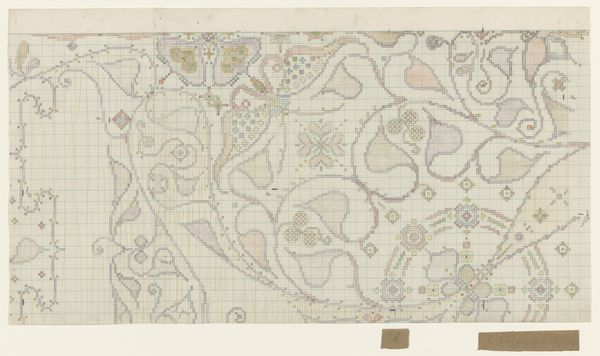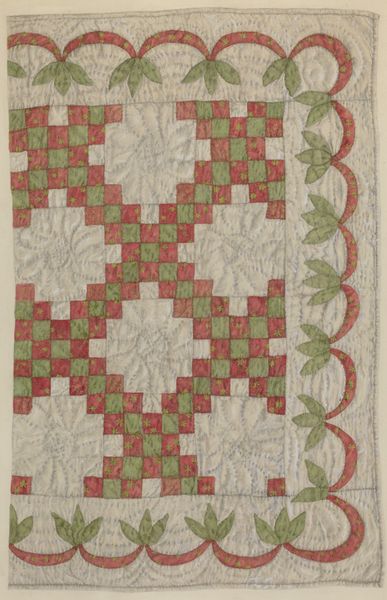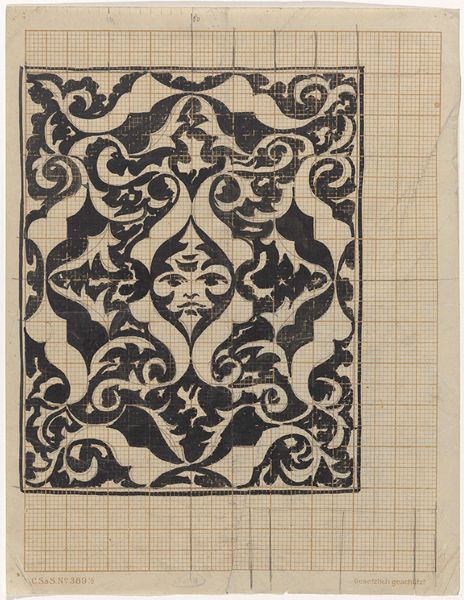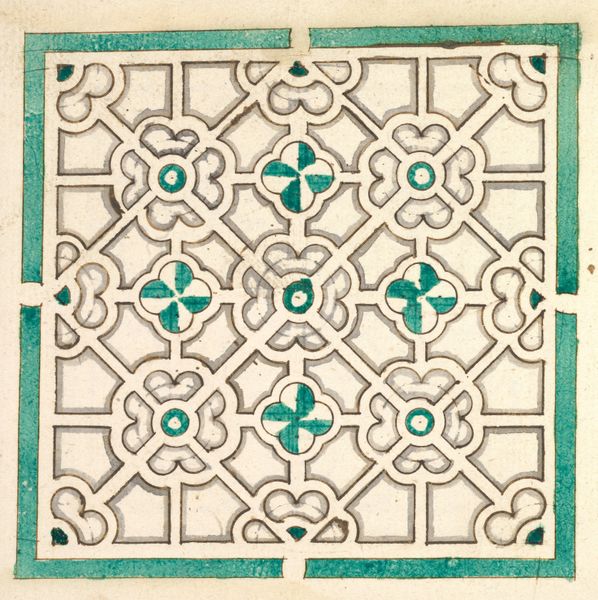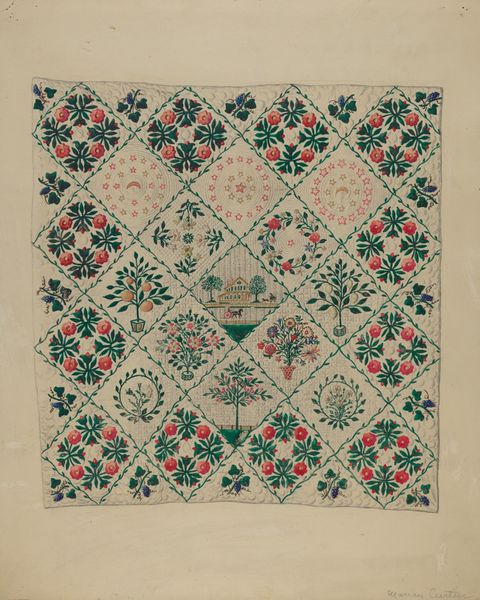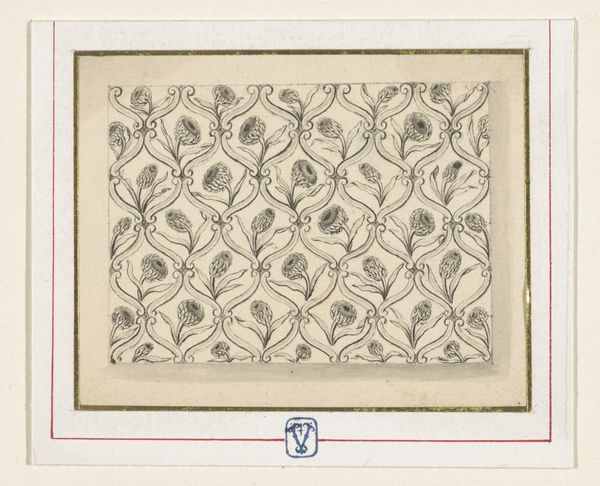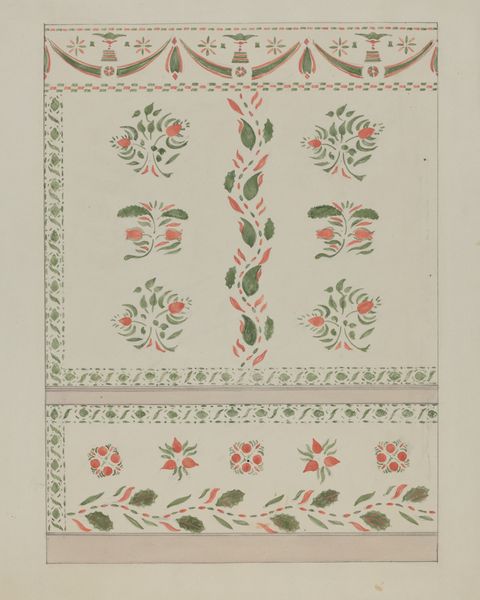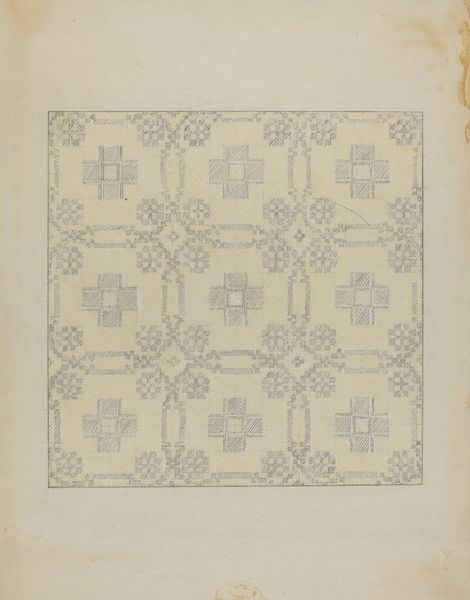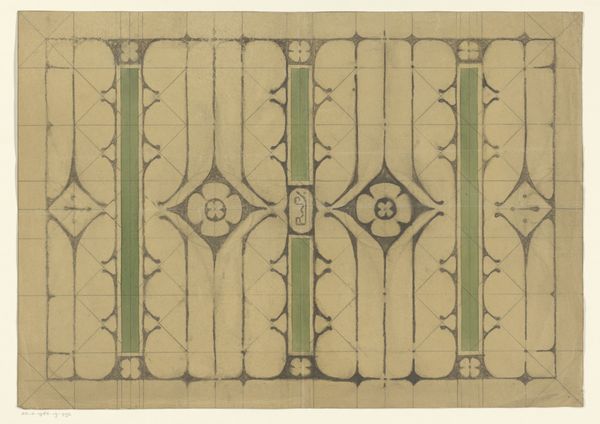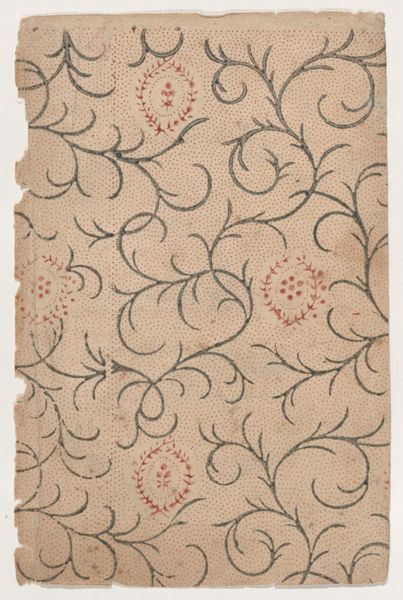
drawing, textile, paper
#
drawing
#
natural stone pattern
#
aged paper
#
naturalistic pattern
#
toned paper
#
arts-&-crafts-movement
#
pattern
#
textile
#
paper
#
pattern background
#
geometric
#
fabric design
#
pattern repetition
#
textile design
#
decorative-art
#
imprinted textile
#
layered pattern
Dimensions: height 308 mm, width 320 mm
Copyright: Rijks Museum: Open Domain
Editor: We're looking at "Ontwerp voor een tapijt in Het Uiltje," a carpet design created sometime between 1876 and 1951 by Theo Nieuwenhuis. It's a drawing on paper, meant as a textile design. It reminds me a bit of cross-stitch, or maybe a very elaborate needlepoint pattern. All those tiny squares... it gives the piece a quaint, almost nostalgic feel. What jumps out at you when you look at it? Curator: It whispers to me of cozy interiors, of Arts and Crafts ideals. Look at the grid, that foundation of measured intention. Each tiny square, a potential stitch, a world held within. Imagine running your fingers across the finished carpet, a tactile journey through swirling vines and stylized blossoms. But look closer – there's a beautiful tension between the rigid structure and the organic forms it holds. What do you make of the limited palette? Editor: It's quite muted, isn't it? Soft pinks, muted greens, and lilacs. It makes me wonder about the space it was intended for. Was it meant to be subtle, to blend in, or did these colours have some other significance? Curator: Perhaps it’s a reflection of natural dyes available at the time or maybe a desire to create a restful atmosphere. These colours were favored by the Arts and Crafts movement, echoing nature. I can imagine Nieuwenhuis contemplating the way a faded rose holds its beauty or how the setting sun tints the leaves just so. It’s like he’s capturing a fleeting moment of beauty in something intended to last generations. Do you find the geometry restrictive, or liberating? Editor: I hadn’t thought of it that way, but maybe the grid provided a framework for experimentation within a set structure, the geometry provides freedom. Curator: Exactly. It is kind of a dance between order and chaos. Next time you see a grid, I dare you to see it not as a cage, but as a springboard. Editor: Thanks, I’ll keep that in mind! This was a fun, thoughtful piece!
Comments
No comments
Be the first to comment and join the conversation on the ultimate creative platform.

